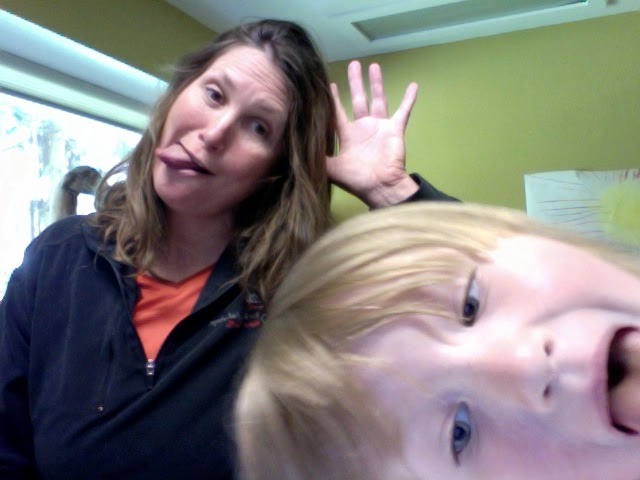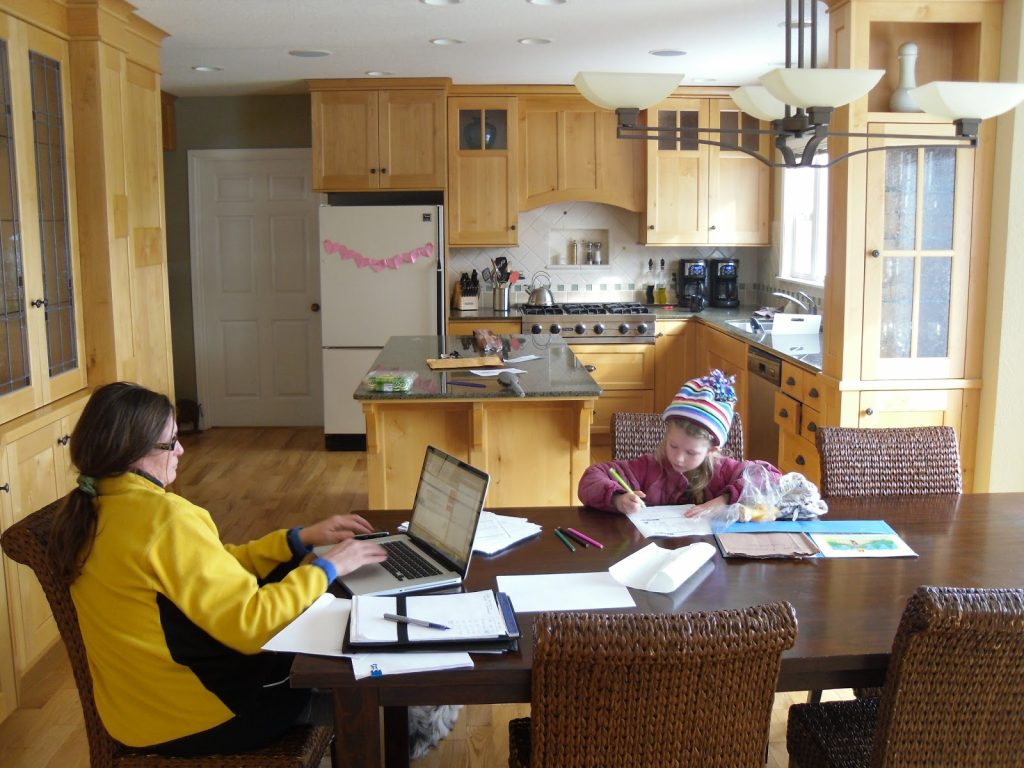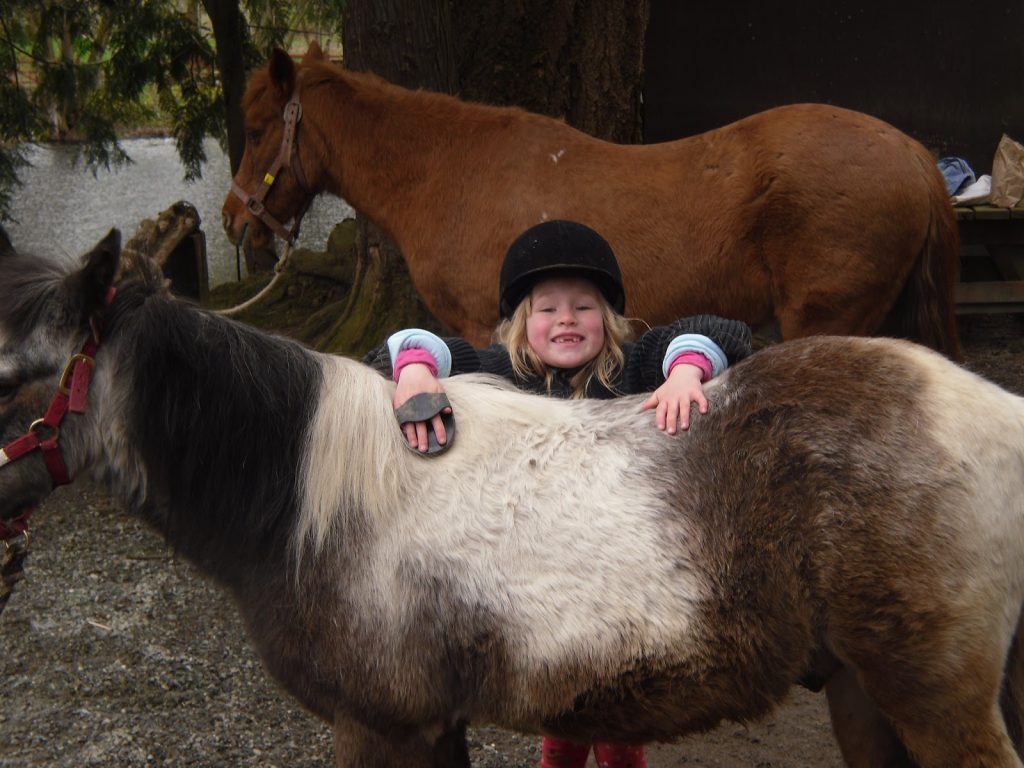1. Hey, can you please introduce yourself?
Jane Geddes, I’m a marketing communications manager and project management professional. I studied environmental design and have a Bachelor of Architecture, but friends invited me to help with their software startup. First, I got into software product marketing, then into digital marketing agencies.
2. What motivated you to choose remote working?
I grew up in Cupertino when Apple was an apricot orchard and witnessed the transformation of Silicon Valley. I lived near the beach in Santa Cruz, California, a Silicon Valley bedroom community. After my daughter was born, I found spending nearly 3 hours/day commuting to my job in Santa Clara was no longer acceptable. I transitioned from software companies to smaller creative agencies in Santa Cruz.
In 2007, we took an opportunity to escape the growth and traffic, and moved to the Pacific Northwest to give our family a better quality of life. We wanted a more wholesome place for our daughter to grow up, where community was more important than status. We moved to a small town and bought a bigger home on acreage, a big upgrade from our tiny California home. I had the opportunity to take a year off with our daughter before she started school, then began to wonder what I’d do for work here. That was when my previous employer contacted me with a new project that I could do remotely.

3. What were your initial months like? Did it live up to your expectations?
Initially, I needed to find a groove from being a full-time mom to being a full-time employee. My daughter had just turned 5 and was used to having my undivided attention. It took me time to find that balance between parenting and working, especially when she was young. I found having other kids over to play with her helped a lot. She quickly taught them that they couldn’t disturb me when I had a meeting. Another strategy was scheduling client meetings in the morning, then we’d go places like the library, park or skating rink, anyplace with wifi where she was safe and I could work.
4. How did you find remote working roles?
We decided to move after I was laid off due to lack of work at the creative agency I’d been with for a couple of years. After a year of being a mom, my former employer contacted me to see if I had any time available. They had a new project, but saw an opportunity to develop it into an ongoing program that ultimately continued for 9 years.

5. What have been the best, good and worst aspects of remote working for you?
That we can live where we live, on a beautiful island with herons in the yard and a view across the water to the Cascade Mountains, and I’ve been so close to my daughter as she’s grown up. I didn’t spend her childhood sitting in traffic during a long commute, working in a distant office, only seeing her in the evenings and on weekends.
I had more autonomy than before, and was able to grow as a team leader and account manager. After a few years, I did yearn for more professional growth but learned that remote work was really rare. Most everyone I talked with said their organization didn’t allow it, and the few that did only granted it to a few trusted employees. So, I stayed where I was, willing to accept limited growth for the opportunity to work remotely. I was well appreciated by clients and my employer which helped retain my job satisfaction. It was the best choice for my family; I have no regrets.
An important part for me was flex time. Read about it in detail here – Importance of Flex Time.
6. What tools do you swear by while working remotely?
Unlike businesses today, we didn’t rely on video calls. Facetime was a novelty that we’d use once in a very great while because it was fun.
In the time since I’d moved away, the physical office had been closed, and the entire team – which had previously been partially dispersed went completely virtual. For the agency owner, he gained huge cost savings in not having a physical office and all the operational costs associated with it.
When I rejoined the team, they had already transitioned and had systems setup using Google Office Suite, DropBox, Harvest timekeeping and Forecast project management. Our most important tool was Instant Messaging (IM). Read more about why IM is the key to our connectivity.
We used DropBox for shared access to documents with version control and used Google Drive for collaborative documents. The most important one was our ongoing Task List. Read more about how I manage my team tasks with the Task List.
Summary of how we stayed engaged without daily video conferences:
- Monday morning phone call to layout the week ahead
- IM for work and social communication
- Phone calls for work and social connection; we would take a ½ hr walk and chat work & life
- Facetime for social connection such as have lunch together
- WebEx for screen sharing, but usually not needed
7. Your most exciting/ hilarious experience since you started working remotely.
We always talked about, but never did get, the corporate branded bathrobes!
Worst was the doorbell ringing and dogs going ballistic while I was on an important client call 🙂

As my kid learned to read, she learned the difference between “Holly, the Client” and “Holly, Fiona’s Mom”, and when it was ok to answer Mom’s phone. The unexpected effects:
1) The kid developed a very mature phone presence at an early age.
2) She decided that a professional desk job is not for her; she’s going into the trades!
8. What is your golden advice to a new remote worker?
- Reach out to your team members and make those social moments; I hear a lot of people aren’t sure how to do that remotely. For us, it was so easy to do with IM.
- Make a way to end your day
- If you’re a manager, let your team have flex time, especially while parents are dealing with remote learning.
9. How do you see your career shaping up and your goals?
I didn’t expect there to be a silver lining in Covid, but for me, it’s the acceptance of remote workers. After 9 years, our program had a successful conclusion but remote work still wasn’t readily available. I found that being a stay-at-home mom was almost more important with a teen than with a pre-schooler. Now that the kiddo is driving and independent and remote work is finally more available, I’m finding a wide range of opportunities to continue my professional growth.
10. How do you expect remote working to evolve in the future?
Tapping back to my education in environmental design, I really hope that we make this an opportunity to evolve our built environment. In areas like Seattle and the Bay Area, demand for prime real estate has driven up property values into unaffordable ranges.
There’s not enough housing available, driving up housing costs and clogging highways with commuters traveling longer distances to get to physical offices. People needed in support services can’t afford to live anywhere close to the city centers where they’re needed.
Commutes are slowed by ongoing construction projects to build wider freeways and more efficient transportation options that never seem to be enough. The massive energy needed to move these people twice a day, to build the infrastructure needed to move them, and operate the buildings that mostly sit empty nights and weekends—and the associated emissions—could be significantly reduced.
Remote workers are a sustainable way to impact many of our housing and transportation issues, but it will take significant time and effort to change. If organizations come out of Covid with an ongoing strategy to allow remote work, downsize facilities and only bring teams together as-needed, we’ll be on our way to achieving that goal.
11. Where can we follow you on?
You can follow me on LinkedIn.
APPENDIX
Importance of Flex Time
An important part for me was flex time. When hired, I was told I could schedule my time appropriately, just get the job done. Here’s how it worked for me:
I’m a morning person; I’d get up early, 5-6 am, and get as much done as I could before the kiddo got up. A benefit that I found: there was a director I needed to regularly communicate with, but she was booked in back-to-back meetings every day. I learned that she was online every morning about 5:30am to 6:15am when she left for work. I could pop her an email, and she’d reply immediately! I could send her something for review, get her feedback, clarify questions, and have changes ready for the team before they got to their desks. Meanwhile, I was out having waffles with my kiddo before school.
During school was the time for scheduling all client-facing meetings. I would take an hour or so off in the afternoon to pick-up the kid, then have meetings with team members during homework time in the afternoon. I was more comfortable having the kid unexpectedly pop up with team members than with clients, though in today’s environment, I don’t think that’s as much an issue.
Finally, sometime between 5 and 6pm, I’d wrap up my day. I’d update the team’s task list as well as my personal tasks (I use Google Tasks for my personal list), prioritizing for tomorrow. Without that transitional commute time when I would mull over work on the way home, I’d let my thoughts churn at my desk instead without responding to more emails. The advantage over commuting was that I could take notes! Finally, I’d plug my phone into the charger and turn off the ringer, shut the laptop, turn off the lights and walk into the other room announcing to the family, “Hey, everybody; I’m home!” Then I’d get the great big, little kid hug greeting that every parent loves.
Finally—and I’m careful to point out that it wasn’t regularly—if I had more work, especially something like a report that required concentrated, uninterrupted focus, I’d get back to it after the kiddo was in bed. I found those evening hours to be golden nuggets when clients, team members, and family weren’t pulling for my attention.
During summer and other school breaks, we’d go do big stuff. I’d put her in summer camp, and work from a nearby Starbucks. I could get good cell signal and tether at a local lake swimming area. There were a few days working from a ski lodge while she learned to snowboard. If I needed to get someplace quieter, I’d have phone meetings while sitting in my car. I’d balance lighter work during the day with more concentrated work very early and in the evenings.
Detailed note on Instant Messaging (IM)
For us, IM was the key to our connectivity. When you’re in an office, you can look around to see who’s there. On IM, we’d set the status to green and maybe add something about the weather or our mood. Because we were geographically dispersed, it was nice to know it was sunny for someone when it was cold and rainy here.
In the office, you bump into each other in the hallways and have a friendly greeting. On IM, we’d pop a quick message like, “How’s it going?” If the other person is busy, they might not respond for an hour and that’s ok. They’d respond when it’s convenient. I made sure I’d engage each team member in 5-10 min of “water cooler” chat a few times a week.
In an office, you might overhear a conversation and someone will gesture you in. Here, we’d need to be more cognizant that someone else might be interested in a conversation and take a moment to invite them in. These often switched over to phone calls.
In an office, when someone has a quick question, they might pop in to see if you’ve got a second. With IM, it’s a simple, “Hey, got a sec?” I can quickly reply or say, “Give me 5” or “On a call; I’ll get back in 30 min.”
Or you might see someone has their office door closed or headphones on while working intently. Again, we’d use status. Change it to red and update to “in a meeting” or “lost in code”. It could also be “in a meeting” and status still green, meaning I can’t engage much but a quick question would be fine.
We’d update the status when unavailable too. It could be “In a meeting ’til 2” or “picking up kids” or “walking the dog”. I knew kids took an hour and dogs took 10 min. One of my favorites was “Propane delivery.” That meant 15 minutes of dogs barking; don’t bother trying to call!
We’d update status throughout the day, expressing our mood or something that happened. Like I said, it was our connectivity. I had an occasion where no one was online for a few days and I felt SO lonely and disconnected!
Detailed Note on Task List
As the PM, I would manage all the work to be completed by setting up tasks, highlighting the ones we’d work on this week in yellow, and the ones that needed to be completed that day in green. I’d order them by priority and assign team members to each task. When they started a task, they’d change the status to something like “In Progress” so that I knew they were working on it. When they were finished, they’d change status to “Done” and I knew it was ready for review and to get moved on to the next task. Because it was in shared Google Sheets, I could see team members editing and changing in real time. To clarify any timing or other issues, I’d send a PM and—if it was more than a brief message to communicate—we’d switch to a phone call.
Bonus Material: from the kid 😀
What’s the earliest thing you remember?
“I remember playing under your desk. You would make a few minutes of time between your work when you could play with me.”
“The den was off limits; Dad wouldn’t let me go down there. We’d go around to get outside so I could play with him. I’d hang my head over the stairs and try to bother you from there.”
“You had that chunk of scrap plywood that said, “Do Not Disturb” and that meant “STAY OUT!” because Dad would bug you too.”
Worst thing:
“If I needed something or wanted your attention, you were busy and I was on my own. Looking back, there’s nothing more you could’ve done. I just had to learn how to deal with it.”
How did the experience of having mom working at home affect you now?
“I don’t know how to be alone. You were always there. Kids who had babysitters or were at Boys & Girls Club, they didn’t have mom available all the time to listen to them.”
“I wish you’d get a normal job somewhere so I can see what it’s like to be home alone.”
Funniest thing:
“I know how to write a killer email. I got in trouble from the coach in 5th grade because I wrote him a persuasive email and he thought my mom wrote it!”
“I liked that you were always taking me to fun places like Jungle Playland, the little, science museum, and the beach. I had a really great childhood just because I could go anywhere all the time. You just wanted wifi.”